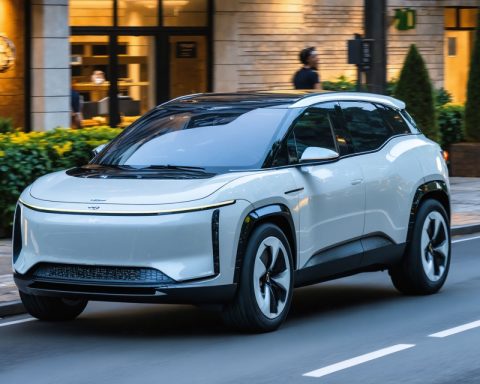- The Australian government’s decision to end the fringe benefits tax (FBT) exemption for plug-in hybrid electric vehicles (PHEVs) could disrupt the burgeoning electric vehicle (EV) market.
- Previously, the FBT exemption made PHEVs appealing as a transitional solution for consumers not ready to fully commit to electric vehicles, addressing range anxiety and urban commuting needs.
- Industry experts, including Paul Maric of CarExpert.com.au, warn that abolishing this incentive might increase reliance on internal combustion engines.
- Despite rising PHEV sales, the growth of fully electric vehicles remains sluggish, indicating potential challenges in EV adoption.
- The policy change could trigger a resale surge in PHEVs and hinder carbon footprint reduction efforts, jeopardizing Australia’s green transition.
- Pre-existing agreements, such as novated leases, can still offer some financial protection to current PHEV owners.
At the cusp of Australia’s burgeoning electric vehicle revolution, dark clouds loom as the government decides to ax the fringe benefits tax (FBT) exemption for plug-in hybrid electric vehicles (PHEVs). This abrupt policy shift, marking the first of April, has rattled industry experts and consumers alike. Ending a vital incentive that slashed thousands off PHEV purchase prices, it threatens to alter the course of our vehicular landscape.
Under the now-defunct exemption, PHEVs positioned themselves as the ideal bridge between gasoline guzzlers and sleek electric vehicles (EVs). Imagine journeying through the Australian Outback, effortlessly alternating between petrol for extended routes and electric power in urban terrains—a dream crafted for those not quite ready to embrace full electrification. This middle ground appealed to 61% of buyers who cited the exemption as their catalyst for change, with 90% acknowledging its significant influence on their purchase decision.
Paul Maric, founder of CarExpert.com.au, voices a poignant sentiment. The departure of the FBT exemption heralds an awkward juncture in the automotive evolution. While drivers are still warming up to the concept of pure EVs, hybrids have crafted a unique niche, offering the best of both worlds without the range anxiety of traditional EVs. Yet now, as Maric warns, we face a potential return to reliance on internal combustion engines.
The numbers tell a gripping tale. The Australian Automobile Association reports a spike in PHEV sales—7,556 in the last quarter alone—while fully electric vehicles languish with minimal growth. As those fuel-sipping hybrids climbed in popularity, electric sales seemingly hit a plateau, with figures barely budging from year to year.
For the pioneers of this hybrid-first approach, the sudden taxation shift is a missed opportunity. By declaring PHEVs unfit for the “zero or low emissions” label, the government risks stalling a green transition. This retreat may drive a resale surge as owners offload PHEVs before market values tumble, pivoting instead toward classic hybrids that retain value sans taxing batteries or charging infrastructure.
The larger concern that echoes through industry corridors is cultural. Revoking the FBT exemption could deter broader EV adoption, halting eco-conscious strides in their tracks. As worried voices from peak industry bodies suggest, maintaining incentives could steer Australia’s carbon footprint toward reduction—a vision now imperiled.
Yet amid the clamor, hope remains for those seeking loopholes in the FBT landscape. Pre-existing commitments, like robust novated leases, still hold protective umbrellas for some. As the storm rages on, the ripple effects of this policy shift may redefine the narrative of how Australians embrace their automotive future. The twilight of the FBT exemption is more than a fiscal move—it’s a point where dreams of a greener world are tested against cold economic winds.
The Future of Hybrid Vehicles in Australia: How Policy Changes Are Shaping the Market
Understanding the Implications of Ending the FBT Exemption for PHEVs
In Australia, a recent government decision has cast uncertainty over the electric vehicle (EV) market by eliminating the fringe benefits tax (FBT) exemption for plug-in hybrid electric vehicles (PHEVs). This policy, effective from April, removes a significant incentive that previously reduced the purchase costs of PHEVs, positioning them as the middle ground between traditional gasoline vehicles and full EVs. This change raises important questions about the future of vehicle adoption in Australia and the broader implications for sustainability and market trends.
Why Was the Fringe Benefits Tax Exemption Important?
1. Bridge Technology: PHEVs offer a transitional option for drivers hesitant to fully commit to EVs due to range anxiety or charging infrastructure concerns. The exemption made these vehicles more affordable and appealing.
2. Consumer Influence: A significant percentage (61%) of buyers cited this exemption as a crucial factor in their decision-making process. Its removal might lead to hesitation among potential buyers.
3. Market Impact: According to the Australian Automobile Association, PHEV sales saw significant growth, indicating consumer interest due to these tax benefits.
How Will This Affect the EV Market?
– Shift Back to Internal Combustion: The removal of the tax exemption may cause a shift back to traditional gasoline-powered vehicles, contradicting Australia’s environmental goals.
– Resale Value Concerns: Current owners might rush to sell their PHEVs before market values drop, as these vehicles no longer offer the same financial advantages.
– Reduced Green Transition: The decreased attractiveness of PHEVs might slow the overall transition to greener transportation options.
Alternatives and Solutions
– Explore Novated Leases: For existing PHEV owners, novated leases might offer continued financial benefits despite the policy change.
– Focus on EV Infrastructure: Investing in charging infrastructure and offering incentives for full EFT adoption could encourage market growth.
– Support for Classic Hybrids: Without the tax, classic hybrids (not requiring external charging) might become a more appealing option for environmentally conscious drivers.
Industry Insights and Future Predictions
– EV Market Growth: While fully EV sales have been sluggish, ongoing improvements in battery technology and infrastructure could promote long-term growth.
– Sustainability and Policy: Continued advocacy for government incentives and support is crucial to achieving Australia’s carbon reduction targets.
– Global Comparisons: Other countries with robust EV adoption may offer insights into how policy can accelerate or hinder market growth.
Recommendations and Tips for Drivers
– Evaluate Long-term Costs: Consider the total cost of ownership, including potential resale value changes and fuel savings, when purchasing a vehicle.
– Stay Informed: Keep up with policy changes and market trends to make informed purchasing decisions.
– Consider Your Driving Needs: If range anxiety is a concern, PHEVs still offer flexibility, especially for long-distance drivers who occasionally need to rely on gasoline.
– Look Into Incentives: Although the FBT exemption is gone, other state-specific incentives may still be available for buyers of environmentally friendly vehicles.
For more information on the evolving vehicle market and expert reviews, visit CarExpert.
As the debate over the FBT exemption continues, it remains critical for consumers, policymakers, and industries to collaboratively navigate this transition toward a more sustainable automotive future. The actions taken today will significantly influence Australia’s environmental landscape in the years to come, demanding careful consideration and strategic planning.














